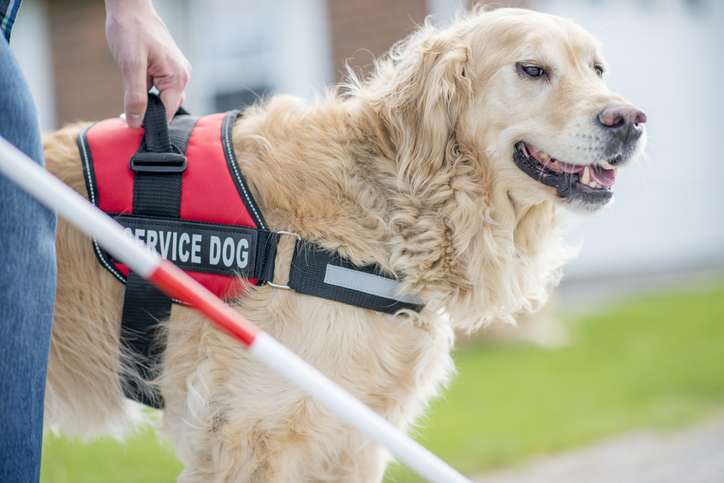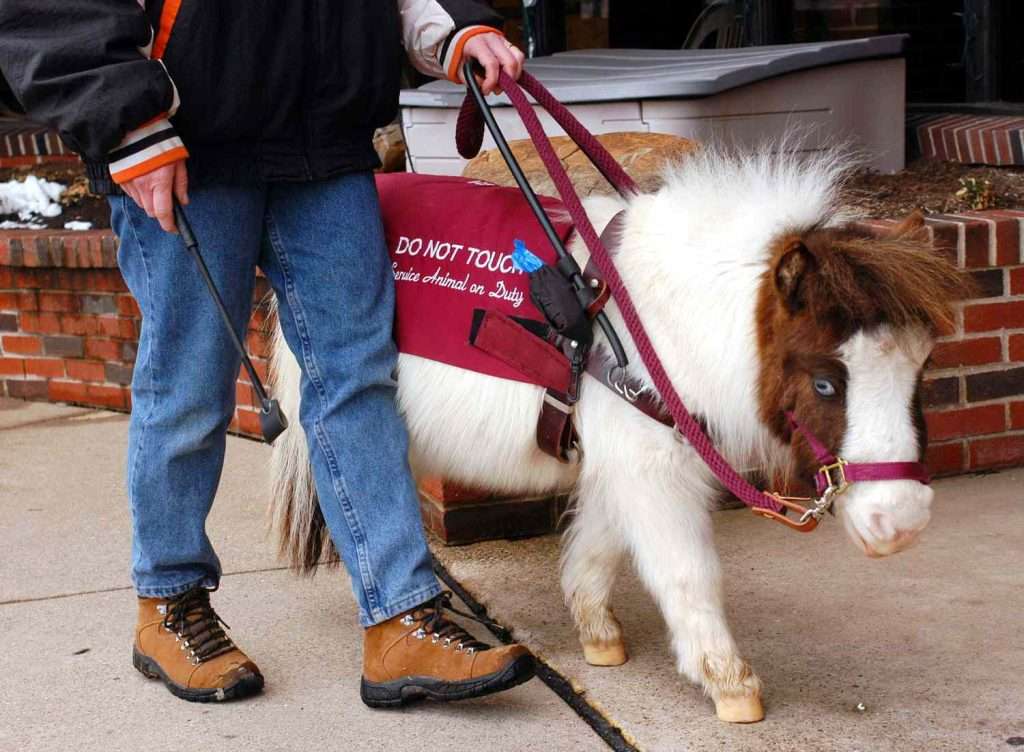Introduction
Service animals are a hot topic in the ADA world. Though the principle of service animals is simple, there are intricacies that can cause confusion. The best way to clarify is to start with the rudimentary elements. What is a service animal?
Basics of Service Animals
As noted in the ADA, a service animal is an animal that is highly trained for specific services dependent on an individual with disabilities and their particular needs. Those needs cover all aspects of a disability, including physical, psychiatric, sensory, intellectual, or other mental disability. The sole purpose of these service animals is to assist a person with disabilities with any daily task, such as helping someone remember to take their medication or helping a person who is blind or has low vision navigate through the world in emergency situations like assisting someone during a seizure. There is a plethora of tasks that service animals can perform for their owner that can differ for each and every person as the animals are individually trained per their owner’s needs.
Where are Service Animals Allowed?

Where things become confusing is where these service animals are allowed to be while navigating the world around them. Service animals are allowed to go anywhere their owner with disabilities can go, which, as is the idea behind the ADA, is anywhere the public can go. But, there are exceptions that make the matter much more intricate than that. Also, the general public may not fully understand that service animals are allowed to be anywhere their owner is, which can cause complaints that are off the mark because there may be areas where animals are typically restricted, such as restaurants. Although usually, animals are not allowed inside a restaurant due to several health codes. Service animals are the exception as they are required to accompany their owner with disabilities to ensure that they can perform any task they may need while inside the restaurant. A similar situation may be in hospitals, but there is a situation where a service animal may not be allowed to accompany their owner. Examples of this may include situations where safety could be at risk, such as testing rooms or operating rooms with dangerous equipment or sterile environments. These examples offer a very straightforward yet varied general rule: service animals are allowed to accompany a person with disabilities except for safety or the fundamental purpose of public accommodations.
A service animal in the workplace is a very similar conundrum. Bringing a service animal into the workplace is on a case-by-case basis, and under Title I of the ADA, this would be considered a reasonable accommodation. This is a case-by-case basis in itself, and it is a consistent conversation so that it will not present an undue hardship or if there are other appropriate alternatives to service animals that may be taken into consideration.
What Qualifies as a Service Animal?
Now, knowing where these service animals are allowed to be present, what qualifies an animal as qualified for service? While it is a common misconception, no formal certifications or approved by the ADA, only two animals are allowed to be used as service animals. Those being dogs and miniature horses. The latter may sound strange, but the ADA regulations specify miniature horses as service animals. However, accommodations may be limited if they use this service animal type. A facility must be able to accommodate the horse based on its type and size. Also, for a horse to be recognized, it must be housebroken and under the owner’s control. These are the same requirements that are in place for dogs, but a miniature horse may be more difficult to meet. As a member of the public or someone working in a public accommodation facility, only two questions may be asked of the person with disabilities about their service animal. One is “Is the animal required because of a disability?” and the second is “What work or task is the animal trained to perform?”. This keeps the privacy of the individual intact while also ensuring that the animal is, in fact, a service animal.

Conclusion
There are many intricacies to service animals and policies that may accompany them. Though they seem very simple, they can be misconstrued. Keeping them simple is the best practice when navigating service animal policies. Your local ADA center can answer some questions that may arise, but working with an ADA consultant such as ourselves during the policy assessment of a SETP can also provide further clarification on the matter.
